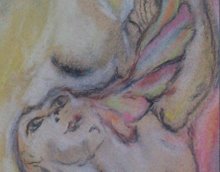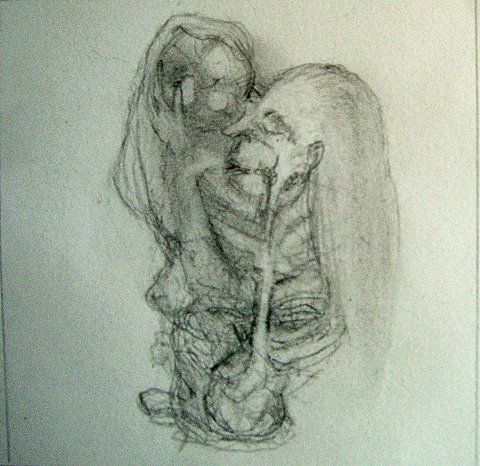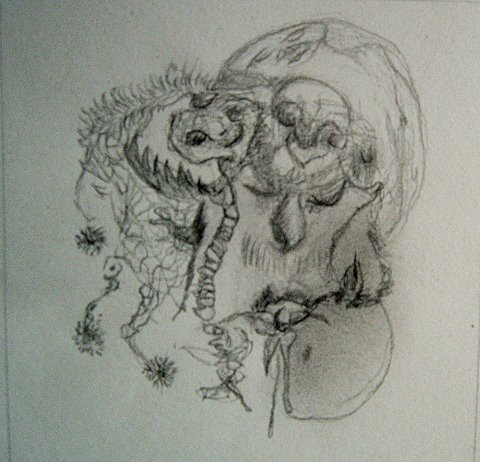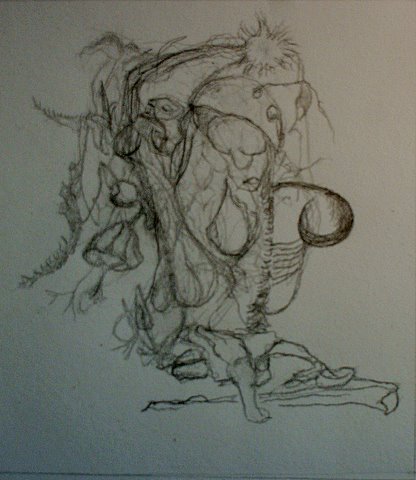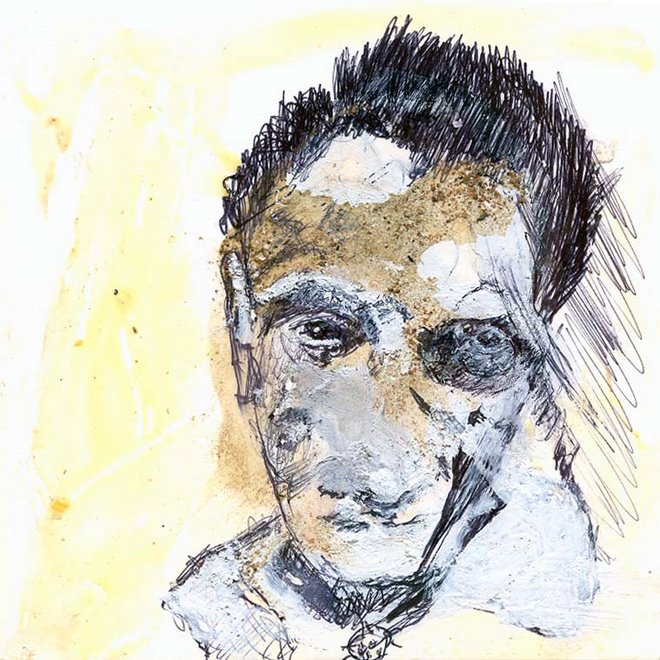Tuesday, October 5, 2021
Bulgaria Sound Specific: Four New Tracks
Friday, July 2, 2021
"Still Between Worlds": poem cycle written december 29, 2020
Writng & Literacy may not be the Measure of All Things: Africa Writes Back: The Libyc-Numidian Script
Africa writes back
European ideas of African illiteracy are persistent, prejudiced and, as the story of Libyc script shows, entirely wrong
"But Bourdieu’s observational mistake – the idea that the Kabyle weren’t
literate – is actually not his most consequential misapprehension. That
would be the idea that literacy is a supreme cognitive and cultural
achievement. It’s one of the means by which universities shore up the
value of their intellectual work – they police grammar, philology,
literacy – in short, they define and champion rigour and ‘standards’.
For those of us brought up within that system – even brought up, as I
was, in a former colony (Kenya) – those standards might appear to be
value-neutral. But they’re value-neutral only because they annihilate
even the possibility of other values, of other modes of thinking or
being. When Bourdieu went from the elite École Normale Supérieure to a
Kabyle settlement, he saw, ultimately, the absence of what made
the university, and his own mind, what it was. That supposed absence is
the product of intellectual arrogance, yes, but it’s also part of a
European cultural heritage"
Tuesday, June 8, 2021
Songs Out of the Head of Papusza
Gili
they run, calling
& whenever the oak leaf falls
Wednesday, April 14, 2021
Reifications//Minimal Animal//Reanimations
just published a new album of experiences. field recordings of the melting, weavings of the voice in search of selves in leaves under the receding snow, reflections on the practice of phonography, meditations on reification, reanimation and poems by Ilaria Boffa who I invited to respond to these themes. listen here. there is an abundance of textual trace below
https://jeffgburekprojects.bandcamp.com/album/reifications-minimal-animal-reanimations
Reifications/Minimal Animal/Reanimations
When I don my headphones and turn up the volume of my recorder I enter
two new worlds, both parallel yet distinct from the one that seemed to
exist alone unto itself only moments before. One new world in which the
audibly distant appears closer because amplified while paradoxically the
nearer sounds seem suddenly far away because magnified, suddenly
gigantic, details alien, shuddering proximity. This new dimension so
immediately a "copy" or transmission of the actual outside, life within
the doppelganger. But yet another world comes into my awareness: the
cavern of my listening body as it descends into itself or becomes
stretched to the horizon of the audible, a body lost in sensation.
Connection & isolation.
This album is a sound-scape, or a few sound-scapes rather, composed from
the field recordings made in Wilson's Park around the Palmiarnia
Poznanska during two days of thaw Feb 18, 19, the harbinger of a still
somewhat dubious Spring 2021, struggling with self-actualization. In
January the sudden cold spell bequeathed us a miniature ice age, that
left ponds and paths frozen completely for the first time in a few
years. This thaw represented an opportunity to capture the sounds of a
transitional weather environment. While recording I contemplated
the process of "keeping it real" versus "making it real" and the title
"Reifications" was born. When I discovered I'd had some microphone
failures on the first day, I went back into the field to retrace what
was melting and discovered yet another world, the disappearance and
awakening of life forms from their hibernation and the next title
"Reanimations" came to mind. The reflections I had about being in the
field as an immersed listener versus being a recordist are given voice
in the second track "Minimal Animal" -- the full text is to found below.
When I began giving voice to my reflections about the process in the
field the general outlines of the composition unfolded as a virtual
brain-cast, a projection of words onto the auditory field of the
listener, a glimpse of a thought process in motion mirrored in the
listener's apprehension, just as the world of sound dawns in scattered
assemblage. Then poems came to the written and re-voiced. Extending the
horizon, I had imagined inviting my poet friend Ilaria Boffa to create
some interventions here and like the light of a distant planet, she came
through. Perhaps this all would have been finished a bit earlier had we
not gone into another Covid-inspired lockdown. In any case, the ice is
all gone by now, the trees do indeed bud, while it's still quite chilly,
life and all that, seems to go on.
April 12, 2021
Jeff Gburek
Dereification
by #Ilaria Boffa
Dereifying things and their
relation to agency.
From entities to systems.
Dereify and reify oneself
to co-exist and glow like
synchronous fireflies.
They disappeared from
the countryside, overbuilt
and polluted.
What is a land if not
a vow that comfort one’s void.
What is a woman if not
her voice, a myriad of echoes
resonance and lament.
Dereification of matter
and reification of the human.
Existing in the Real
without Reality.
Minimal Animal
by Jeff Gburek
When I went out yesterday "into the field," I didn't record and I didn't
even take gear. But since I'd had that exchange with you, I found
myself reflecting on the act of recording. On the one hand, I said, into
my dictaphone, field recording is a media that, unlike all the others,
leads you deeper into the moment, into the now, the present. But
paradoxically, the recording is made, being made, and the replay is
taking place in another moment where, in some sense, it doesn't belong.
It is an abstraction. As a recordist, I treasure the moment of
contemplation and immersion into listening. If the recordings turn out
to be not so useful, at least you can feel you had the experience. But
another more haunting thought came to mind: that we are constantly
recording a place that no longer exists. The place is never in the
recording. The law of nature keeps the place sacred and sovereign. We
are taking away some trace of acoustic phenomenon but the place perhaps
remains unaffected. when the place is violated by developers or
destroyed by fires, the place is made different. if we had recorded a
place just before an intervention or environmental upheaval, we perhaps
preserved some layer of acoustic properties. but that only underlines
the fact that the place we recorded doesn't exist and that it's very
likely it can never be brought back to being what it once was. So what
is the scope of this activity, in fact? Certainly one's actual
experience is important and involved. I came to the conclusion that what
matters most is to combine reflection upon the experience with the
presentation of recording. Just as Steve Simpson , the marine biologist
who was trying to record fish realized that the boats were changing the
life of the fish. He never recorded the boats because that anthropogenic
noise is not what he's interested in capturing and presenting to us.
It's the secret conversational life of fish that is interesting, not the
rumble of engines which we know so well because we created the
machines. Yet his observation that we need to narrate the absence of the
space where the animal lives naturally is important. It's more or at
least equally as important as the abstraction of the sounds made by
hydrophones, the latter being held up as sparkling gems of pure audio
but not giving us a full picture of marine realities.
Matter, mater, madre
by Ilaria Boffa
Matter, mater, madre
the origin of things
and their substance.
The manner in which
molecules interact with
one another, bind to one another
break inhibitions and conceive
anew while ignoring
other choices.
Things and their substance
our substance.
To the eye the task and the peril
of matching what appears with
what it’s familiar, dispensing with
experience. The loss of the univocal
and unambiguous certainty
of proximity.
Your substance that I borrow
from the stream
when it steers its current and
enlaces my forearm
abandoned to its will.
My substance detrital and lithified
at the estuary.
Matter carrying matter.
Things and their substance
The unambiguous certainty of proximity
Le cose e la loro sostanza
L’inequivocabile certezza della prossimità
Cover art by Jeff Gburek. Images of Charlie Chaplin and Josephine Baker
lifted from Kate Raworth's Doughnut Economics. "Economists need a
metaphorical career change: from engineer to gardener".
Wednesday, March 24, 2021
Toin, Spurl & Peducment.
new album link ist dar
Saturday, March 13, 2021
Meet The System: Orphan Sound System. Archives of Williamsburg--based band, Volume One. With a commentary by John Elmanahi.
the music of the trio. free for download, name your price.
https://orphansoundsystem.bandcamp.com/releases
Welcome to Meet The System by Orphan Sound System aka OSS. We are making a map from where we started out. Our sonogeography is diverse and this album recorded in the garage in Williamsburg just one of many artefacts from a very dense 2 years of creative activity. We pass the microphone to John El-Manahi, who recalls our formation in 1994 (years are often contested) in Firenze, Italia.
"It’s my recollection that OSS was formed the moment John Palumbo knocked
on the door of the flat I was sharing with Jeff Gburek, Florence Italy,
1993, and said “I heard the Monk and had to see where it was coming
from.” From that moment we had music as the foundation of our
interaction. Gburek and I had met the year before in similar fashion
when I’d heard the sounds of an acoustic guitar in some alt tuning
echoing in the stairway of a temporary student lodging...I eventually
found him and said something dumb about Paco Del Lucia or John
McLaughlin. Eventually that awkwardness gave way to cautious, suspicious
friendship that solidified over travels, sharing music, philosophical
discussions, art and poetics.
By the time Palumbo had come to Italy, we’d already been flatmates
binging on Scelsi, Xenakis, Bartok, Ligeti, NanCarrow, Messian, Henze,
Boulez, Stockhausen, Beethoven etc....Mingus, Monk, Miles, Coltrane, Sun
Ra, Albert Ayler, Throbbing Gristle, Neubauten,
Can, Sun City Girls...Umm Kalthoum, Gnawa Music, Nass El Ghiwane
Turkish Pop, Balinese and Javanese Gamelan, Sundanese Pop, Tibetan
Monks, African Music of Pygmy, Bantu, and Tanzanian Peoples, Nigerian
Beat...to name a few. The point is that we were immersing ourselves into
a sonic universe that was completely interconnected. We listened with
the intent of tying music to our current state of being as a means of
expressing all our creative and spiritual energy. Along with all the
sound were books, poetry, mythology, film, art, philosophy and world
religions. Everything was included in our understanding of sound as a
means of expression and transformation. Palumbo came in from a primarily
Jazz, punk background...but shared the improvisational sensibility that
our listening was unconsciously developing. We were aligned with the
sensibilities of Sun Ra, Cage, Kurt Schwitters, and other transcendental
Jazz musicians.
After Italy we met up in
Williamsburg, Brooklyn in 1995. We were a cobbled together unit that had
some pretty ramshackle instruments and amps...I believe we were very
lucky to have landed in such musical poverty because it forced us to be
inventive with what we had. Create instruments and sounds from tuning,
preparing, found objects, and invention. I did not own or use a single
pedal during my entire time with OSS. I simulated echo, and pitch shifts
by adjusting my playing style to mimic the sound I wanted to make. I
added shortwave radio and a hand held tape recorder that I would play
through the guitar pickups.
The whole band only had one or 2 pedals that Gburek cooped to make the
“Lancelot”. It was a microphone jammed into the horn of a discarded
bugle, run through a pitch shifter, that had a looping setting. In
addition to it being a feedback wand it was a listening instrument that
took all the sounds we made and transformed them. The feedback sounds
were completely unique. At times the Lancelot would just run on auto
pilot while Jeff played another instrument. It’s in these moments that
OSS produced more sound than seemed possible for 3 people.
*** see Jeff's note below
Palumbo was always an inventor. He
tried to make a “drum machine” that would allow him to play far more
drums than he would be able to by hand. It was a massive wood and cable
contraption that was far too big to move and kinda dangerous if you got
too close to it. As it was he had saw blades, metal pipes and plates,
shards of cymbals, and assorted other pieces that could be used as
percussion. They were hanging all around his drum kit within reach of
Jeff and I. Our extensive metallic percussion was another facet of OSS’s
texture. I’d found an old metal fireplace and attached a metal comb to
it. That became the “4th Orphan”...an instrument that could sound like
anything from a timpani to a toy piano. We would play any of these at
will so we could shift textures seamlessly.
This is all to explain how the music of OSS began to form and evolve in
the moment due to the sounds we had available. Playing bass or guitar or
drums was a given, but we wanted to compose pieces, or create an
ecstatic event like the folkloric music of indigenous people. We didn’t
care if we were virtuosic on an instrument. It was more the sound and
timing of it that made any difference. Palumbo using clarinet, or
trombone on the moments he was inspired to, provided far more impact
than an overly cerebral academic choice. Everything was drawn out of the
ether and we were just along for the ride.
We’d made attempts to be more
purposeful even as an improvisation group. There’s a certain amount of
snottiness and elitist mentality in the circles of avant-garde and
experimental music. We were fully confronted by this, even though we had
studied music composition in college and we had all been very
experienced players. It didn’t matter. In those circles your pedigree
has to pass the sniff test, like dogs smelling each other’s asses. In
response we created improvisation maps and notation for scoring so we
could be more deliberate in the process. We developed things like “non
playing” where we would frenetically mimic playing as close to our
instruments and hit by chance. What resulted was heavily textured quiet
moments with percussive exclamations, which would emerge with greater
frequency. Also, we would create shapes that had wave like forms with
markings like crescendo, decrescendo, accelerando, ritardando, staccato,
legato etc. and we could map out a flow based on visual information. We
all had visual art backgrounds so we used these maps and waveforms to
create loose scores that allowed us to adhere to a “composition”.
Ultimately we internalized all these methods and used them in a seamless
non verbal communication based solely on aligned intuition. Basically
we stopped seeking approval from academics and followed our creative
instincts. What we were producing was like nothing we’d ever heard so we
felt we were on the right path.
The gigs were a mixed bag. The climate was accepting enough for noise
and improvisation bands in NY at that time. Though there was still the
arms folded audiences who were too uptight to go anywhere. The exception
were loft parties and squats that had a more informal vibe. These
people we’re looking for freakish acts that would give their events a
legit art vibe. So we had some very good performances that were well
received.
The resurfacing of these
recordings are a time capsule from that pre-internet period of
experimentation and free thinking. Alternative methods of production and
disseminating ideas. The tapes that have survived are almost entirely
live and created in the moment. If one were to play them in order they
would see a clear evolution of technique and complexity of idea."
Note on The Lancelot by Jeff Gburek
The Lancelot was named so because once the microphone was inserted into
the bell of the bugle it resembled a medieval lance. The canalization of
the soundwaves lead to a peculiar effect: it would create a feedback
pitch entirely dependent on what area of the speaker of the amplifier it
was aimed at and the physics of this made it predictable and playable.
It seems to be the fore-runner of microphone/saxophone feedback
arrangements I would later see used by John Butcher & others. The
Lancelot was also therefore a wind instrument, a kind of electro-acoustic kazoo and with
the pitch-modulator and delay pedal it was capable of becoming a
cybernetic system interactive with the entire sonic environment. Once I
started working with Djalma Primordial Science, I started to call it the
Orphan's Ear. The Lancelot was a device that both listened/received and
transmitted/generated sounds.The search for automatons as John
indicated would not stop there. As we continue to re-master and upload the surprises will continue.







